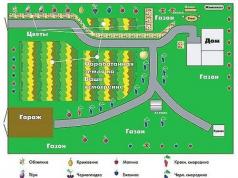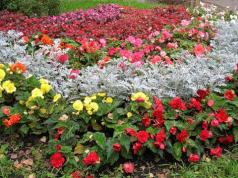I have not had to grow all kinds of roses. It turns out that there are so many of them that we gave the task to our specialist to explain what types exist and where they are mainly used.
Conventionally, all roses were divided into several groups, each of which has its own merits.
- Hybrid Tea
- floribunda
- Patio
- shrubby
- Park
- miniature
- Climbing
- Semi-climbing
- Refurbishment
- polyanthus
- ground covers
- curbs
Note that park, border, or shrub groups may include representatives from any other category.
The inflorescences themselves are divided into four varieties according to the number of petals:
- simple - up to 7 petals,
- semi-double - from 8 to 20,
- terry - from 20 to 35,
- densely double - from 35 to 60.
The most popular group. Its distinguishing feature is the very high quality of the roses and the flowering "waves". Medium-sized representatives have a height of 60-70 cm, and tall varieties - up to a meter. Roses are terry and densely double. Their diameter reaches 14 cm. Beautiful large, most often single, buds are located on straight stems. In addition to the bush form, they are good in the form of a stem tree. Thermophilic.
floribunda
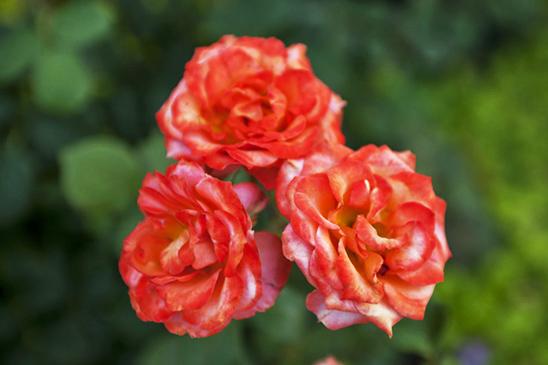
It is located between tea-hybrid and polyanthus species. With the former, they are similar in size and shape of buds, and with polyanthus they are united by the duration of flowering and the nature of racemose inflorescences, in which several roses open simultaneously.
Here you will find both dwarf varieties with a height of 20 cm, and high varieties up to a meter. The buds are simple, semi-double and terry. In form and beauty, they are somewhat inferior to hybrid tea varieties. But most varieties are disease resistant.
They are very good in mixborders with their stretched (from June to September) flowering and bright saturated color.
Patio

This is a short species, reaching a height of 30-50 cm. By the way, if we compare the patio group with miniature roses and dwarf varieties of floribunda, then the border between them is very arbitrary.
But there is still a difference: patio roses, unfortunately, do not hibernate. And in general, in the open air, they do not bloom well and are very sick. Breeders originally bred them as houseplants. Therefore, it is better to grow in containers and bring them into the house for the winter.
But in winter, during the dormant period, they are hot and too dry in a heated room. The temperature should be no higher than 10 degrees, so glazed balconies and patios will be just right. Hence the name of the whole group. The beauty of blossoming roses can be observed continuously all summer until late autumn.
Shrubby or semi-climbing
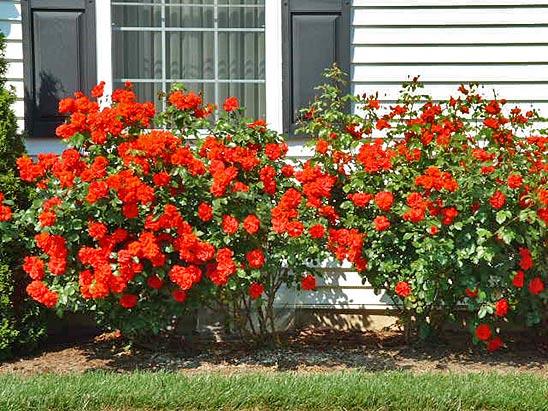
They are also called scrubs. And although all roses are shrubs to one degree or another, scrubs differ in their volumes. They reach up to 2 m and can be upright or semi-climbing. Remotely, the shrabs resemble cultivated wild rose, but the terryness and size of the flowers surpass it. Plants are mostly tall, although dwarf varieties are also found. They are more unpretentious than hybrid tea, they are easy to cut. However, shelters for the winter are still required. They are used in both horizontal and vertical gardening. Flowering is plentiful and very long, repeating.
Park
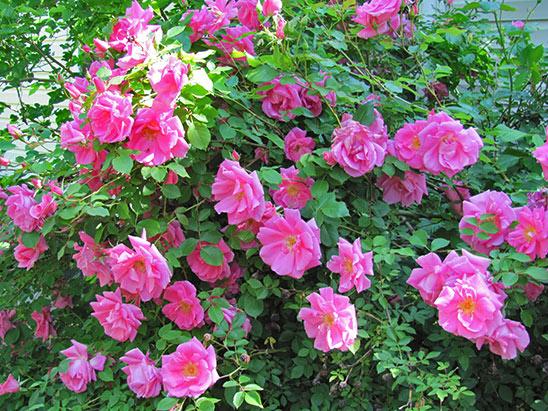
It is generally accepted that these are cultivated varieties of wild rose. Indeed, in most cases, the flowers look more like wild roses than classic roses. Spray roses are often sold under the name, especially from foreign sellers. What is wrong in principle - this classification is accepted only in Russia.
In fact, they include old varieties and varieties that can survive the winter without problems in open ground conditions. Abundant flowering begins in June and lasts no more than a month once a season. They look great in single and group planting, as a hedge. Rose wrinkled (or Rosa rugosa) also belongs to this group.
miniature

This variety has appeared recently, but is already gaining popularity. The height of a compact evergreen bush is 15-25 cm or 30-50 cm, depending on the variety. The leaves are small, shiny and thickly cover the stems. Roses of various colors, small, single or collected in inflorescences. Miniature roses bloom several times until frost. It is good to grow them in pots (including in an apartment), in containers, on borders. This species is hardy and resistant to diseases and pests.
Climbing

As you already understood from, this includes rose bushes with long weaving branches, which require mandatory tying to a support. They serve as an excellent decoration for pergolas, arches, trellises, retaining walls. They are creeping and climbing. Creeping species bloom once a season, require pruning annually. Climbing varieties bloom several times a season, have a hard stem. They do not need annual pruning.
Refurbishment
![]()
Very beautiful roses: tall, spreading, with large double flowers of various colors (8-16 cm in diameter), fragrant. The height of the bush with erect branches reaches 2 m. The leaves and thorns are also large. They bloom twice a season, and the second time is not for long. In our Russian climate, wrapping is required for the winter. But, unfortunately, they are quite capricious and prone to diseases.
polyanthus
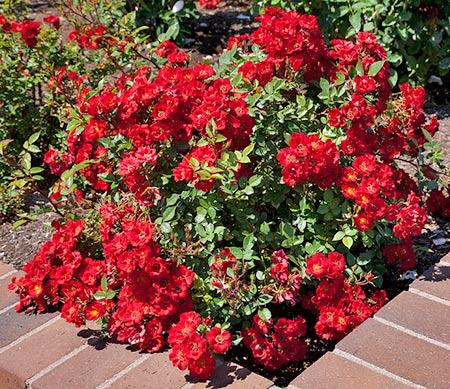
These are compact, dense and low (30-40 cm) bushes with small or medium buds collected in large inflorescences (20 - 100 roses per bush). They are rarely fragrant, but bloom profusely and continuously from mid-May to late autumn. The buds themselves are small - up to 4 cm in diameter, from simple to densely double. Quite winter hardy. In the garden, it is good to make borders and borders out of them. And in room conditions, it is advised to try distillation.
ground covers
![]()
It is easy to recognize by one characteristic feature: the branches grow more to the sides than in height. Although the height does not exceed 50 cm, the creeping branch can be up to a meter long. Flowering is abundant, dense and long. The shoots are densely covered with shiny foliage. They feel good on the slopes and beautifully decorate any site on which they are planted. The group is disease and frost resistant.
The types of roses listed in this article are described briefly. Details of growing a particular group can be found in our other articles.
For a snack, watch this video. It has a blooming rose.

